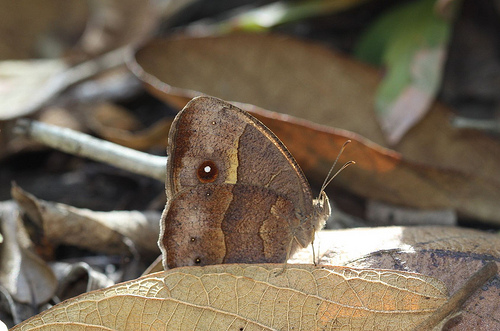Wet or dry: Butterflies reverse sex roles in extreme seasons
 In the case of the African butterfly Bicyclus anynana, females develop ornate wings and court males if they spend the larval stage in a dry, cool environment. The reverse occurs, according to Kathleen Prudic from Yale University and colleagues, when the butterflies are exposed to wetter, warmer environments.
In the case of the African butterfly Bicyclus anynana, females develop ornate wings and court males if they spend the larval stage in a dry, cool environment. The reverse occurs, according to Kathleen Prudic from Yale University and colleagues, when the butterflies are exposed to wetter, warmer environments.
“As expected, female Bicyclus anynana in warmer moister conditions that mimic the wet season in the native African range were more likely to mate with males with ornamented wings,” explained a Yale University press release. “However, the roles were reversed in cooler drier climates. Females played the role of suitors and flashed their eye spots to choosy males. When scientists studied the wing spots, which reflect light in the UV range, invisible to humans, they found they were brighter in the courting females relative to the males of that same season, or relative to females raised in the hotter season.”
In a study published today in Science magazine, Prudic and colleagues suggested that the reversal is brought about by the environmental conditions. When transferring sperm, the male butterflies also administer nutrients, increasing the females’ chances of surviving the harsh conditions of a warm, dry season. Therefore, it is in the best interest of the female butterflies to attract males for their supply of nutrients, whereas males will be more selective in choosing females since they are limiting their own chances of survival by mating. As a result, the females that flash their showy spots are more likely to be chosen.
Photo Credit: South African Nature